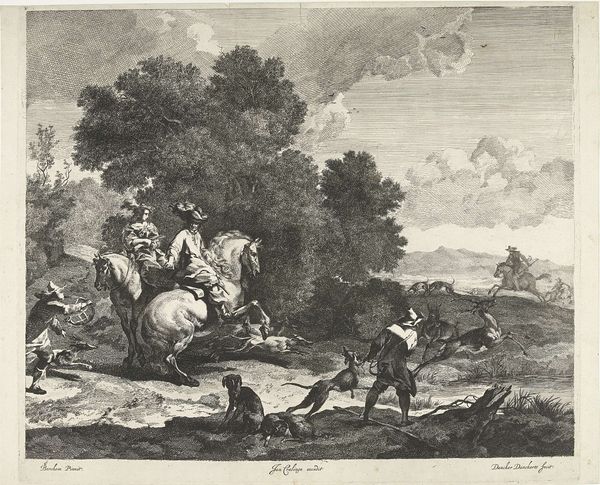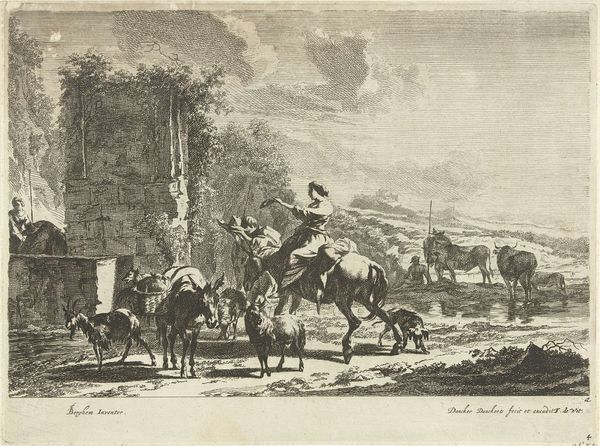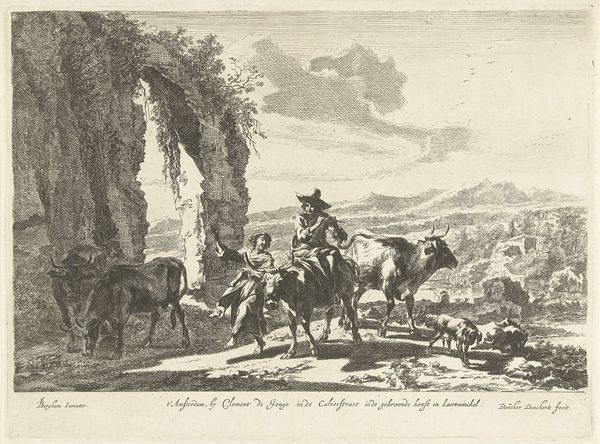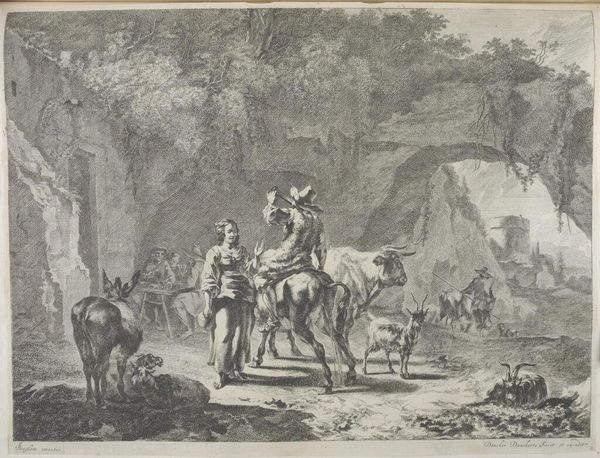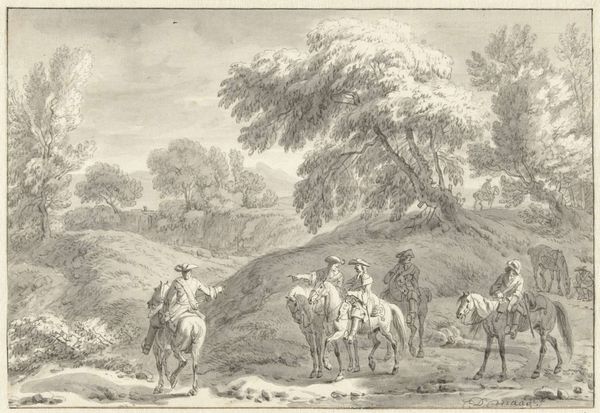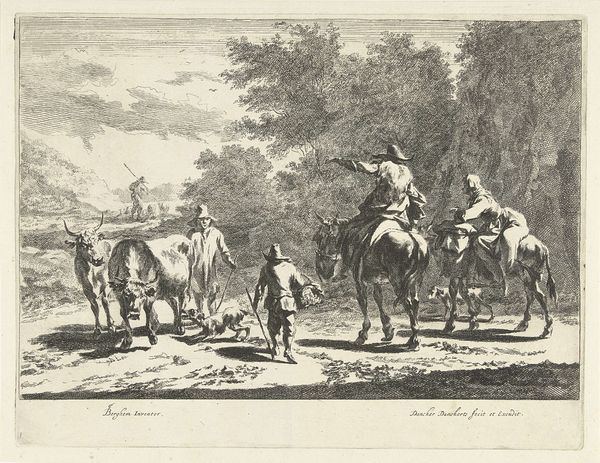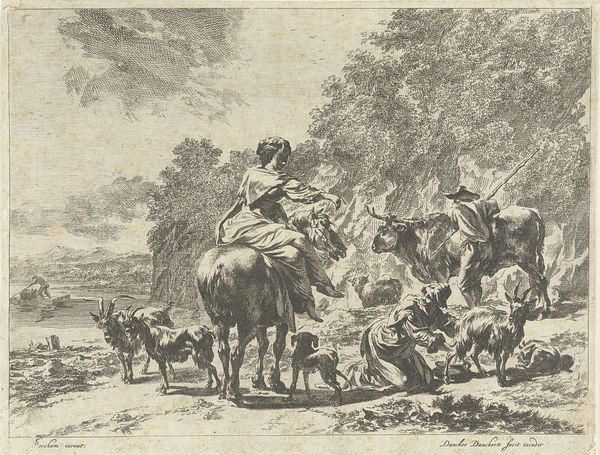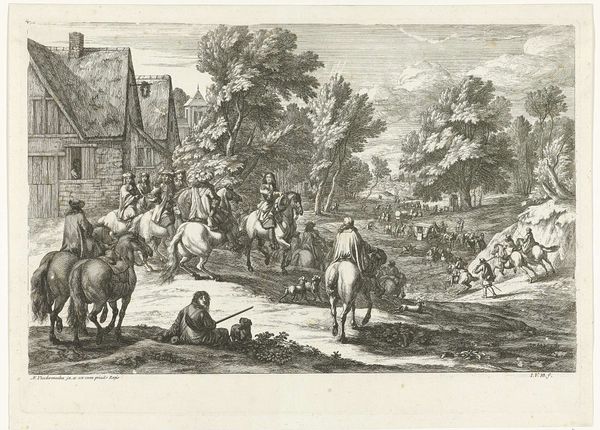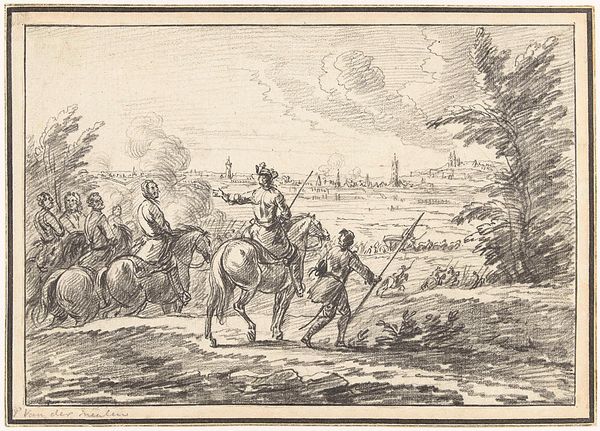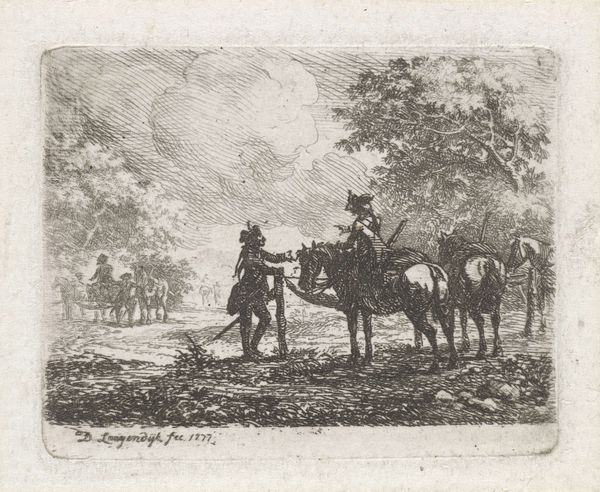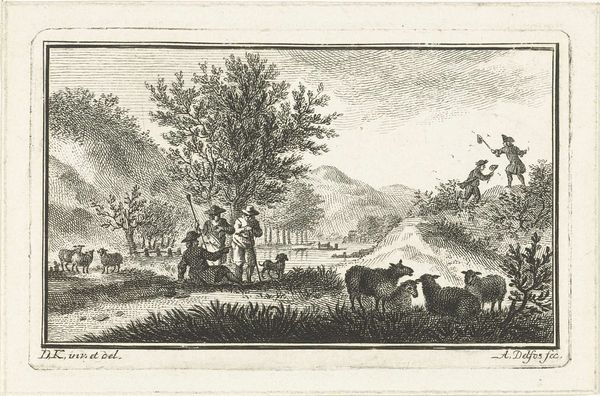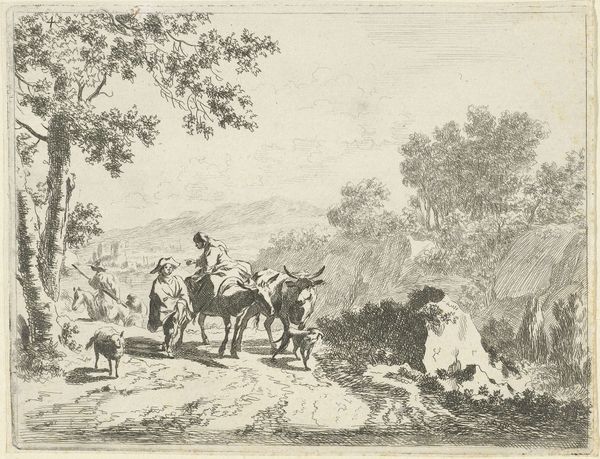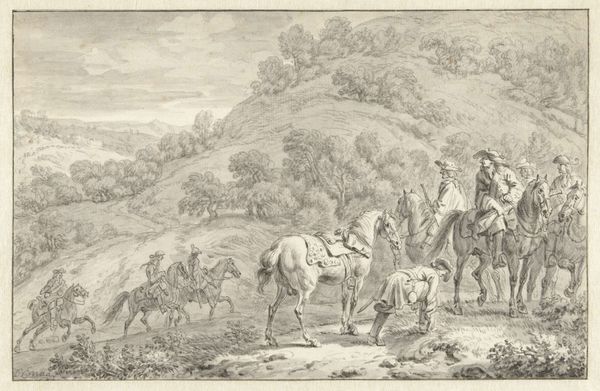
etching, engraving
#
baroque
#
etching
#
landscape
#
genre-painting
#
history-painting
#
engraving
#
realism
Dimensions: height 204 mm, width 266 mm
Copyright: Rijks Museum: Open Domain
Curator: Looking at "Herders waden met kudde koeien door beek" or "Herdsmen wading with a herd of cows through a brook," an etching and engraving by Dancker Danckerts from the mid-17th century, now at the Rijksmuseum... Editor: It’s a strangely serene scene. Despite all the activity with the figures, animals, and water, it's got a quietness to it. The grayscale adds to that muted quality. Curator: Right, consider the laborious process required to produce such an image. The precise application of acid to the metal plate, the careful inking and printing... Each impression would have demanded a repetitive physical commitment, producing images meant for broad consumption. Editor: Absolutely, and it strikes me how idealized these peasants seem. Their labor is framed almost romantically, and I wonder how this image might have been viewed through different social lenses then, and what it says about the class dynamics represented, even if unintentionally, with the composition highlighting nature over toil. Curator: Interesting, as a print, its multiple existences also point to the commodification of imagery, and Danckerts was of course part of a whole workshop-based system with labour specialization. Etchings and engravings facilitated distribution of images, constructing a shared visual culture that was bought and sold and reshaped through different political moments and ownership patterns. Editor: I see what you mean, the act of reproduction becoming central. It moves beyond a singular 'masterpiece' into a collective, almost democratic realm of images. However, the perspective, with the herders immersed, but the viewpoint being elevated and dry, can almost remove us, maybe making us less sympathetic. How do we balance recognizing its material creation while not overlooking these ethical and social considerations when interpreting works like these? Curator: That's an excellent point to ponder, especially in museums where artworks are framed apart from the physical effort required to manifest them. We can appreciate an original's fine lines without always connecting with the labor behind its manufacturing. Thank you, those crucial aspects shouldn’t be overlooked. Editor: Likewise. Exploring an artwork, while trying to remain conscious of the diverse readings from multiple perspectives is a challenge but certainly always enlightening.
Comments
No comments
Be the first to comment and join the conversation on the ultimate creative platform.

